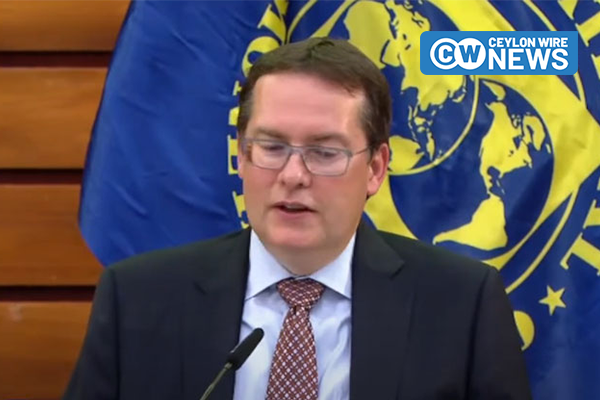The International Monetary Fund has noted the new developments regarding the restricted discussions between the Sri Lankan government and the Ad Hoc group of bondholders.
Peter Breuer, the senior mission chief for Sri Lanka, stated that the IMF is currently awaiting additional information and will assess the agreed terms to ensure consistency with the parameters and debt sustainability objectives under the IMF-supported program.
On Wednesday night, a filing with the London Stock Exchange revealed that Sri Lanka and the bondholders had agreed on debt restructuring terms. The Sri Lankan government announced that restricted discussions took place with the Steering Committee of bondholders regarding its International Sovereign Bonds (ISBs) from June 21 to July 2, 2024.
The discussions included legal and financial advisors Clifford Chance LLP, Lazard, White & Case, and Rothschild & Co. The Steering Committee, comprising ten major bondholders representing 50% of the ISBs, held a working session in Paris on June 27-28.
They agreed on core financial terms for restructuring the ISBs, documented in a Joint Working Framework, which includes governance-linked bond features. The framework needs confirmation from Sri Lanka’s Official Creditor Committee and IMF staff for consistency with debt sustainability objectives. According to the Joint Working Framework, a 28% haircut on the nominal amount of existing bonds is proposed.
What Are International Sovereign Bonds?
International Sovereign Bonds are a method for countries to access funds from international financial markets. Since attaining middle-income status in 2007, Sri Lanka has used this approach to secure loans from the global market, albeit at elevated interest rates. Following the default in debt repayments in 2022, Sri Lanka now faces the task of settling $12.5 billion in sovereign bond debt, with accrued interest amounting to nearly $2.9 billion.
What Measures Have Been Taken to Service This Debt?
The Hamilton Reserve Bank of the United States initiated legal proceedings against Sri Lanka to recover $250 million in sovereign bonds on behalf of multiple institutions. Recently, a committee comprising representatives from ten entities that provided loans through sovereign bonds deliberated on strategies for restructuring Sri Lanka’s debt. The discussions involved members of a steering committee representing the bondholders, alongside Sri Lanka’s legal and financial advisors, Clifford Chance LLP and Lazard, and the bondholders’ advisors, White & Case and Rothschild & Co.
The second round of restricted discussions took place in Paris, where the parties engaged in restructuring talks under strict non-disclosure agreements. A consensus was subsequently reached regarding the restructuring of the sovereign bonds.
What Are These Agreements?
The process is complex, but it is crucial to simplify it for better understanding. Currently, nearly $2.9 billion in accrued interest is owed to sovereign bondholders for the outstanding debt period. Following negotiations, the creditors’ steering committee agreed to an 11% haircut on this total, leaving $1,678 million. New sovereign bonds, termed plain vanilla bonds, will be issued for this adjusted sum, with a maturity period of four years and a coupon rate of 4%. Payments are scheduled to commence from September 30 of this year.
Additionally, a payment of $225 million will be made as a consideration for expressing consent to the restructuring process. The most complex aspect involves repaying the outstanding debt exceeding $8 billion due from 2028 onwards. The repayment approach, known as the Macro Link Bonds, entails the repayment being contingent on Sri Lanka’s economic growth. If Sri Lanka achieves a gross domestic product of $88.6 billion by 2028, there will be a nominal debt haircut of 28%. If the GDP reaches $100 billion, the debt reduction will be 14.96%. Conversely, a drop below $88.6 billion will allow for a more substantial debt haircut of over 30%.
An additional restructuring proposal involves nearly $2 billion of sovereign bond debt, suggested to be implemented through governance-linked bonds, aligning credit cuts and concessions with the efficiency of the governance process, proposing a 0.5% loan reduction.
What Happens Next?
Sri Lanka’s agreement on debt restructuring terms with bondholders was revealed in a filing with the London Stock Exchange. Confirmation is needed from Sri Lanka’s Official Creditor Committee (OCC) to ensure it aligns with the agreed terms. IMF staff will also review it to ensure consistency with Sri Lanka’s IMF-supported program. Once it passes both the OCC and IMF review, the International Sovereign Bonds can be subject to restructuring.









